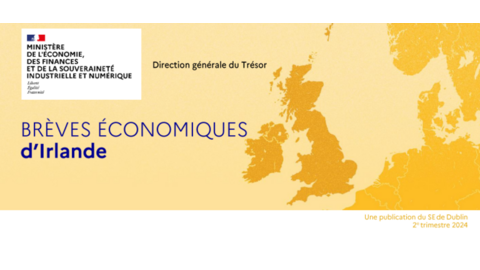Analyses & Studies
Economic forecast for France

The latest macroeconomic forecast for France.
| Indicators | 2023 | 2024 | 2025 |
|---|---|---|---|
| GDP growth (%. yoy) | 0.9 | 0.9 | 1.3 |
| Inflation (%. yoy) | 5.7 | 2.8 | 2.0 |
GDP is estimated to have grown by 0.9% in 2023, driven by strong growth in the second quarter. This is marginally below the Autumn 2023 Forecast. High inflation and tighter financial conditions weighed on growth throughout the year despite government support measures and a very favourable labour market, accompanied by dynamic wages that preserved households’ purchasing power. While net exports contributed positively to growth, these were fuelled mostly by a decrease in imports of goods, as the growth of domestic demand was limited.
In 2024, GDP is expected to grow moderately, by 0.9% annually, a downward revision of 0.3 pps. compared to the Autumn Forecast. The revision can be mainly attributed to a lower carry-over from a weaker than expected second half of 2023. Economic activity is expected to gather momentum in the second half of 2024. Private consumption is set to drive GDP growth on the back of rapidly declining inflation. Investment is expected to remain subdued until the second half of the year due to still restrictive financing conditions but is then set to start recovering. Net exports are projected to make no contribution to GDP growth given that imports are set to rise - pushed by strong demand - while exports of goods are only expected to progressively catch up with their pre-crisis level.
In 2025, GDP growth is forecast at 1.3%, marginally below the Autumn Forecast. Economic activity is expected to be further driven by private consumption as inflationary pressures dissipate, and households’ saving rate declines gradually towards its historical average. Investment from both households and corporations is projected to recover progressively. Net exports are set to have a limited contribution to growth, with strong exports growth offset by rising imports as domestic demand expands.
After peaking at 7.0% in the first quarter of 2023, HICP inflation decreased throughout the year to reach 4.2% in the fourth quarter, largely thanks to declining energy and commodity prices. The progressive phasing-out of energy-related measures and the increase of the electricity tax in February 2024, to roughly two-thirds of its pre-crisis level, will lead to an increase in electricity prices of close to 10%. Meanwhile, wage increases are still set to feed underlying price pressures. However, the downward trend in inflation is set to continue over the forecast horizon. After 5.7% in 2023, inflation is expected to reach 2.8% in 2024 and 2.0% in 2025. For 2024, this is slightly lower than in autumn, while the forecast for 2025 remained unchanged.


